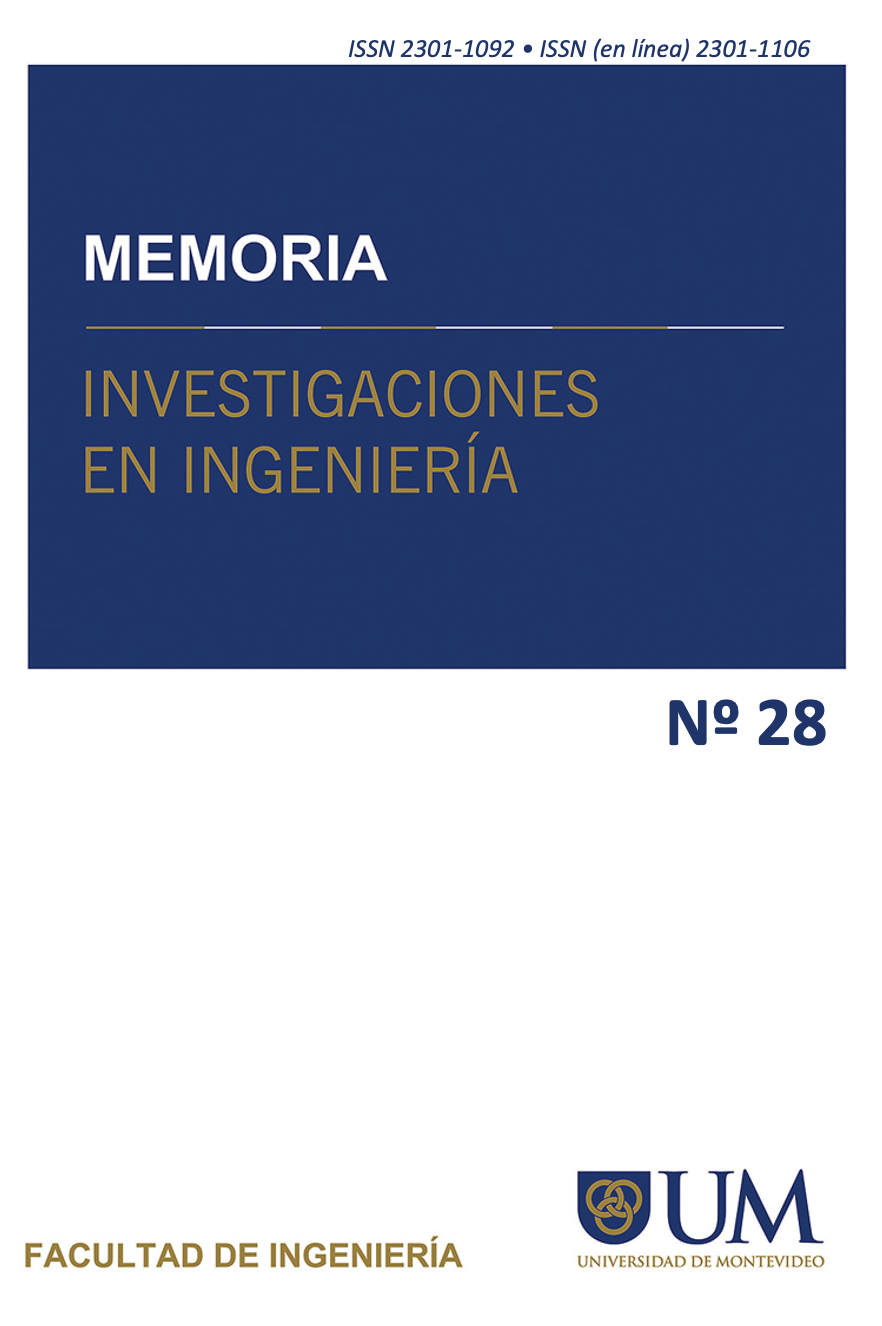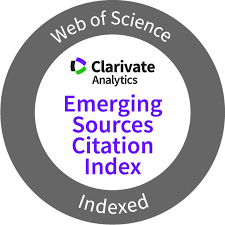Impacto del temple posterior a la soldadura en la microestructura y las propiedades mecánicas del acero de baja aleación y alta resistencia
DOI:
https://doi.org/10.36561/ING.28.5Palabras clave:
Resistencia a la tracción, Dureza, Fuerza de impacto, SMAW, Acero de baja aleación de alta resistencia, Medios de enfriamientoResumen
La soldadura por arco metálico protegido (SMAW) es la técnica de soldadura más utilizada en las industrias de ingeniería. En comparación con otras técnicas de soldadura por arco como TIG, SMAW concentra menos calor. Sin embargo, soldar trabajos gruesos utilizando SMAW puede provocar problemas graves, como distorsión estructural debido a una distribución no uniforme del calor de entrada. Las altas tensiones y distorsiones térmicas pueden degradar las propiedades mecánicas, de forma similar al calor de entrada elevado. La eliminación rápida del calor puede prevenir tales defectos, y se utilizaron diferentes medios de enfriamiento como arena, agua y aceite para investigar las variaciones en las propiedades mecánicas. Se seleccionó acero de alta resistencia y baja aleación debido a su buena soldabilidad y fácil disponibilidad, lo que lo hace adecuado para muchas aplicaciones industriales, como en las industrias espacial y de defensa. Los resultados de las pruebas de tracción mostraron que el enfriamiento con aceite fue superior a otras técnicas de enfriamiento porque las juntas enfriadas por aceite tenían la mayor resistencia a la tracción y ductilidad. Sin embargo, las uniones enfriadas por agua mostraron el límite elástico más alto, pero las uniones enfriadas con aceite tuvieron la mayor eficiencia de soldadura. La dureza de las uniones enfriadas por agua en la zona afectada por el calor y en la zona de soldadura fue mayor debido al rápido enfriamiento en agua. La energía de impacto de las juntas enfriadas por aceite en la zona afectada por el calor fue superior a la de otras juntas. En general, las propiedades mecánicas de las juntas enfriadas por aceite fueron superiores y mostraron una mejor configuración geométrica, como distorsiones mínimas.
Descargas
Citas
R.S.Parmar, “Welding engineering and technology”, Published by Khanna Publishers, Delhi, 2005.
Sindo Kou, “Welding metallurgy” second edition, Wiley interscience publication, 2003.
A. Shazad, J. Jadoon, M. Uzair and M. Akhtar, "Effect of composition and microstructure on the rusting of MS Rebars and ultimately their impact on mechanical behavior," Transactions of the Canadian Society for Mechanical Engineering, 2022.
L. Srinivasan, T. Deepan Bharathi Kannan, and P. Sathiya, “Effect of heat input, heat treatment on microstructure and mechanical properties of GTA welded aerospace material 15CDV6”, Journal of materials research, Apr 2017. https://doi.org/10.1557/jmr.2017.70
A. Shazad and M. Uzair, "Effect of quenching medium on the strength and hardness of 15CDV6 steel welded joints produced by argon arc welding," Metallurgy and Heat Treatment of Metals, vol. 11, pp. 45-45, 2024.
A. Shazad, M. Uzair, and M. Tufail, "Influence of multiple post-weld repairs on mechanical and microstructural properties of butt weld joint utilized in structural members," International Journal of Precision Engineering and Manufacturing, pp. 1-8, 2024.
P. N. Kumar, Y. Bhaskar, P. Mastanaiah, and C. V. S. Murthy, "Study on dissimilar metals welding of 15CDV6 and SAE 4130 steels by inter pulse gas tungsten arc welding," Procedia Materials Science, vol. 5, pp. 2382-2391, 2014.
M. C. Sekhar, D. S. Rao, and D. Ramesh, "Welding development in ESR modified 15CDV6 material," International Journal of Mechanical Engineering and Robotic Research, vol. 3, pp. 499-504, 2014
S Sapthagiri, K Jayathirtha Rao, K Ashok Reddy & C Sharada Prabhakar, “Comparison of Mechanical Properties on 15CDV6 Steel Plates by TIG- Welding with and without copper coated filler wires” International Journal of Advanced Research Foundation, www.ijarf.com, Volume 2, Issue 5, May 2015.
Rami Rafea Abdul-Ameer , Saad Hameed Al-Shafaie, Abdul sameea Jasim Jilabi, “ Controlling distortion in gas metal arc high strength low alloy steel welds” Materials Today: Proceedings, June 2021, https://doi.org/10.1016/j.matpr.2021.06.010.
Srivastava S, Garg RK. “Process parameter optimization of gas metal arc welding on IS: 2062 mild steel using response surface methodology” Journal of Manufacturing Process, 2017;25:296–305. https://doi.org/10.1016/j.jmapro.2016.12.016.
Li C, Wang Y, Han T, et al. “Microstructure and toughness of coarse grain heat-affected zone of domestic X70 pipeline steel during inservice welding” Journal of Material Science, 2011;46(3):727–733. https://doi.org/10.1007/s10853-010-4803-y.
Eroglu M, Aksoy M. “Effect of initial grain size on microstructure and toughness of intercritical heat-affected zone of a low carbon steel” Material Science Engineering A. 2000;286(2):289–297. https://doi.org/10.1016/s0921-5093(00)00801-7.
Bijaya Kumar Khamari, Soumya Sobhan Dash, Swapan Kumar Karak, Bibhuti Bhusan Biswal, “Effect of welding parameters on mechanical and microstructural properties of GMAW and SMAW mild steel joints”, iron making and steel making, Sep 2020.
Ruming Geng, Jing Li, Chengbin Shi , Jianguo Zhi, Bin Lu, “Effect of Ce on microstructures, carbides and mechanical properties in simulated coarse-grained heat-affected zone of 800-MPa high-strength low-alloy steel”, Materials Science and Engineering:A, Apr 2022,
A. Narwadkar, and S. Bhosle, “Optimization of MIG welding parameters to control the angular distortion in Fe410WA steel”. Journal of Materials Manufacturing Processes. 2016. vol. 31. Pp. 2158-2164, doi:0.1080/10426914.2015.1127939.
P. Adamczuk, I.G. Machado, J.A. Mazzaferro, “Methodology for predicting the angular distortion in multi-pass butt-joint welding”, Journal of Materials Processing and Technology. 240 (2017) 305–313, https://doi.org/10.1016/j.jmatprotec.2016.10.006.
Wei Liang, Dean Deng, “Investigating the influence of external restraint on welding distortion in thin plate welded structures by means of numerical simulation technology”, Journal of Physics. Conference. Ser. 1063 (2018) 012082, https://doi.org/10.1088/1742-6596/1063/1/012082
A. Shazad, M. Astif, M. Uzair, A. A. Zaidi, “Evaluation of preheating impact on weld residual stresses in AH-36 steel using Finite Element Analysis,” Memoria Investigaciones en Ingenieria 26 (2024) 225–243
M. Anis, W. Winarto, “Effect of plate thickness and weld position on distortion and residual stress of welded structural steel”, Material. Sci. Forum 689 (2011)296–301 https://doi.org/10.4028/www.scientific.net/msf.689.296
M. Islam, A. Buijk, M. Rais-Rohani, K. Motoyama, “Simulation-based numerical optimization of arc welding process for reduced distortion in welded structures”, Finite Element in Analysis and Design. 84 (2014.vol,) 54–64 https://doi.org/10.1016/j.finel.2014.02.003
A. Shazad, M. Uzair, T. Jamil, N. Muhammad, "A Comparative Study on the Joint Hardness and Tensile Properties of Dissimilar Aluminum Alloy using Tungsten Inert Gas (TIG) Welding," in 4th Int. Conf. Key Enabling Technol. (KEYTECH 2024), Atlantis Press, pp. 173-178, Dec. 2024.























